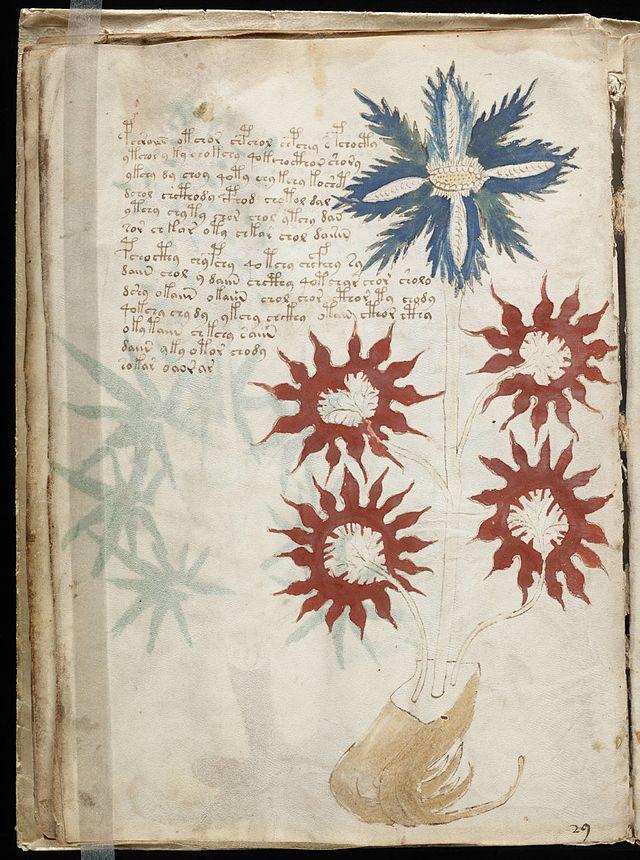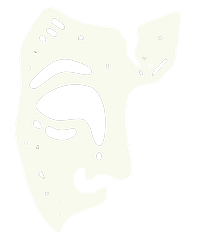In the annals of literary history, few texts have captivated the imagination and fueled the fervent curiosity of scholars and laymen alike quite like the Voynich Manuscript. Lovingly cradled in the rarefied confines of Yale University’s Beinecke Rare Book and Manuscript Library, this enigmatic volume is a testament to the enduring allure of the unknown. Dated to the early 15th century, its pages are a tapestry of cryptic illustrations, indecipherable script, and unfathomable symbolism, defying the conventions of language and art as we understand them. As we turn the pages of this extraordinary tome, we delve into a labyrinth of secrets, each twist and turn revealing a conspiracy of shadows that dances at the edges of our historical comprehension. How did this manuscript come to be? Who penned its intricate symbols, and what secrets do they hold? Join us as we embark on a captivating journey to decode the enigma of the Voynich Manuscript, tracing its origins, examining its multifaceted interpretations, and exploring the myriad theories that have emerged over centuries, each attempting to unlock the vault of its mystery.
Table of Contents
- The Unraveling of Secrets: A Historical Journey Through the Voynich Manuscript
- Symbols and Scripts: Understanding the Unique Language of the Manuscript
- Botanical Mysteries: Exploring the Flora Illustrated Within its Pages
- Modern Endeavors: Recommendations for Future Research into the Voynich Manuscript
- Closing Remarks
The Unraveling of Secrets: A Historical Journey Through the Voynich Manuscript
The Voynich Manuscript, a richly illustrated codex dated to the early 15th century, transports us into a world where languages and symbols intertwine seamlessly. Its pages are filled with peculiar botanical illustrations, astronomical diagrams, and strange figures, which convey an enigmatic charm, compelling scholars and cryptographers alike to decipher its secrets. Over the decades, various theories have emerged regarding its origin and purpose, including notions that it was a herbal manual, a treatise on alchemy, or even a book of medieval magical spells. Indeed, the manuscript’s content raises critical questions about the knowledge and beliefs of the time it was created, as interpreters find themselves lost between the lines of an undecipherable language that might be the work of a solitary genius or a collective mystery worthy of a Dan Brown novel.
As investigations into the Voynich Manuscript continue, several prominent figures have devoted their lives to unraveling its coded text, only to discover a tapestry of competing interpretations. Among the notable endeavors was the remote research group comprised of linguists, historians, and cryptographers who believed the manuscript could hold the key to understanding medieval science and mysticism. Their findings highlighted various essential themes, including:
- The significance of nature and herbalism—the manuscript’s extensive herbarium suggests a complex understanding of botanical properties.
- Astronomy and astrology’s influence—the celestial illustrations might indicate that a connection exists between human destiny and cosmic cycles.
- The interplay of art and science—each vivid image appears to challenge modern classifications, hinting at an era where art transcended mere representation.
Symbols and Scripts: Understanding the Unique Language of the Manuscript
The Voynich Manuscript, often referred to as the most enigmatic book in the world, is not merely a collection of illustrations and text; it is a portal into an uncharted realm of communication. The manuscript is filled with a variety of curious symbols and scripts, each serving a unique purpose. The primary text, written in an indecipherable alphabet, consists of approximately 170,000 characters that do not correspond to any known language. This has led numerous scholars, cryptographers, and linguists to conjecture on its potential origins, yet no definitive answer has emerged. The distinctive features of the script include:
- Curvilinear Characters: Many letters are composed of flowing, rounded shapes.
- Frequent Use of Repetitions: Certain sequences appear repeatedly, hinting at potential grammatical structures.
- Inverted Letterforms: Some symbols resemble traditional letters but are uniquely styled or flipped.
Accompanying this strangeness is an array of captivating illustrations that further baffle observers. From bizarre botanical drawings to peculiar astrological diagrams, the images often align with the written content, creating a tapestry of complex interconnections. In the scientific community, debates continue over the interpretations of these visual elements, with researchers proposing various theories regarding their significance. Below is a brief overview of some notable illustrated themes:
| Theme | Description |
|---|---|
| Herbal Illustrations | Depictions of unknown plants, each accompanied by labeled names. |
| Astronomical Diagrams | Complex celestial charts, possibly indicating astrological significance. |
| Biological Figures | Curious representations of human anatomy, including possible reproductive themes. |
Botanical Mysteries: Exploring the Flora Illustrated Within its Pages
Deep within the pages of the Voynich Manuscript lies a veritable Eden of enigmatic flora, each illustration whispering secrets from a time long obscured by the mists of history. The meticulous, yet unidentifiable plants depicted throughout its folios tantalize scholars and botanists alike, raising questions about their origins and meanings. Could they be the creations of a fantastical mind, or do they represent a forgotten knowledge of herbalism? Beyond mere aesthetic, these plants serve a purpose in the manuscript’s intricate tapestry, possibly revealing medicinal properties or esoteric connections that bind the natural world with the mystical.
The botanical illustrations also serve as a rich field for exploration, inviting both art and natural history enthusiasts to engage in deciphering their craftsmanship. Among the verdant depictions, one might find:
- Floral Anomalies: Unfamiliar blossoms that defy classification yet captivate the imagination.
- Symbolic Roots: Plants intertwined with symbolic meanings, positing hypotheses about their relevance in medieval culture.
- Medicinal Wonders: Speculation on potential healing properties, grounded in a mixture of history and myth.
This tapestry of extraordinary flora enhances the manuscript’s allure, blurring the lines between botany and artistry, mediating a dialogue between the past and the present. Perhaps, in unraveling these mysteries, we may not only rediscover the lost language of plants but also the wisdom embedded within nature itself.
Modern Endeavors: Recommendations for Future Research into the Voynich Manuscript
The Voynich Manuscript, with its perplexing illustrations and enigmatic script, continues to spark intrigue among scholars and amateur cryptographers alike. As the study of this manuscript evolves, future research endeavors should focus on a multi-disciplinary approach that integrates several fields. Scholars might consider employing the latest advancements in computational linguistics, artificial intelligence, and machine learning to analyze the manuscript’s text. Such innovations could automate pattern recognition in the script, opening new pathways to decipher its meaning. Moreover, conducting comparative studies with other known ciphered texts, such as the Beale Ciphers or the Rohonc Codex, may yield insights into cryptographic methods of the era.
Furthermore, a closer examination of the historical context and provenance of the Voynich Manuscript can yield fruitful avenues for exploration. Investigating the botanical illustrations with modern taxonomic techniques can provide clues to the origins and potential uses of the plants depicted. A detailed analysis of the manuscript’s materials—such as parchment, ink, and binding—could shine light on its geographical and temporal origins. Collaborative projects between art historians, botanists, linguists, and pharmacologists may also enrich the narrative surrounding the manuscript’s purpose and commissioning. embracing a holistic view of research will empower the academic community to unlock the secrets held within this peculiar tome.
Closing Remarks
As we draw the curtain on our exploration of the Voynich Manuscript, we stand at a crossroads of history and mystery, where the whispers of the past converge with the relentless curiosity of the present. This enigmatic text, with its untranslatable script and curious illustrations, continues to captivate the minds of scholars, cryptographers, and adventurers alike.
What secrets lie hidden within its pages? What purpose did its author intend? The manuscript beckons us from the depths of the library vaults, challenging us to decipher its coded narratives, much like the ciphers of old that have long since faded into obscurity. Each symbol and image holds the potential to unravel centuries of knowledge, yet it remains ensconced in the labyrinth of interpretations and theories that speak to the very essence of human inquiry.
The Voynich Manuscript serves as a potent reminder of the mysteries that time has shrouded, a symbol of the allure of the unknown. It invites us not merely to solve its riddles but to embrace the journey of discovery itself—one that reminds us of the irresistible human desire to understand, to decode, and to connect with those who walked the earth long before us. In a world increasingly driven by clarity and certitude, the manuscript stands solemnly as a testament to the complex layers of our history, urging us to respect the enigmatic treasures of our shared past.
As we close this chapter, we are left with more questions than answers, yet it is precisely this unresolved nature of the Voynich Manuscript that enriches our tapestry of inquiry. So let us continue to seek, to ponder, and to wonder—a journey not just to decode a manuscript, but to decode ourselves, a quest to grasp what it means to be human amidst life’s enduring mysteries.


